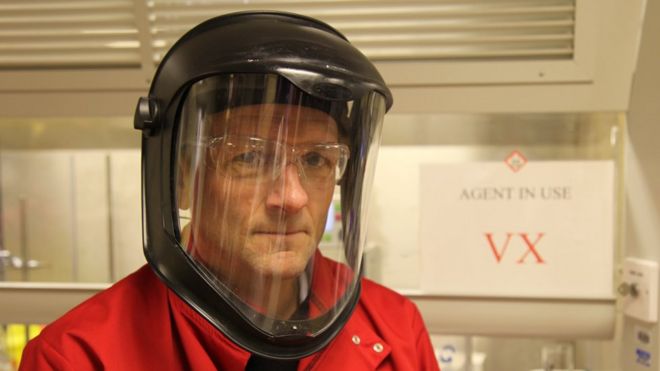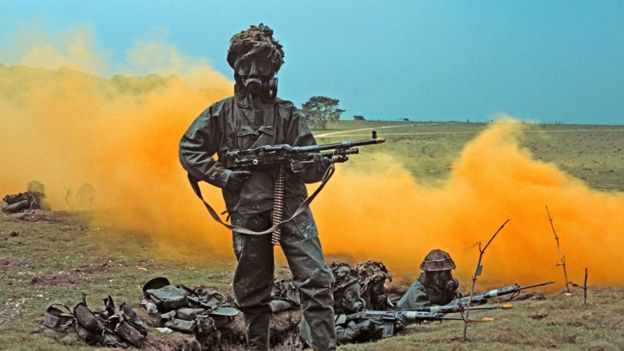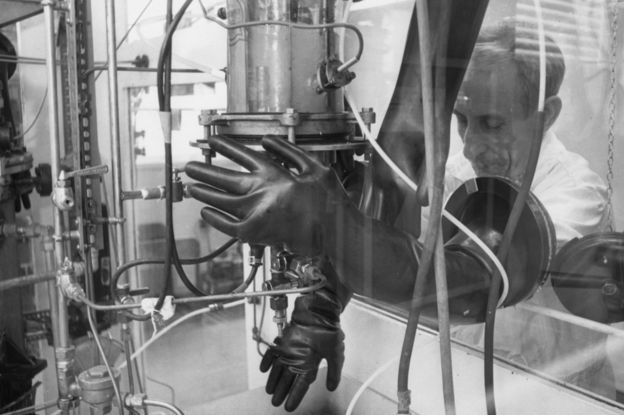THE MIRACLE MAN: MORRIS GOODMAN
After a devestating plane accident, no one thought he could continue strolling, talking or notwithstanding breathing all alone. He demonstrated them.
May 27, 2013
When we say somebody was large and in charge before he encountered a sudden fall, we typically mean it as an analogy. On account of Morris Goodman, it was truly valid.
On March 10, 1981, Goodman was flying a solitary motor Cessna 172 around Chesapeake Bay. Thirty-five years of age and one of the top extra security operators on the planet, Morris lived in a 5,000-square-foot home in Virginia Beach, Va., with his better half Sandy, drove a Cadillac Seville and had acquired the Cessna quite recently the day preceding.
As Goodman arranged to arrive, the setting sun reflected off the water. "It resembled a million jewels only for me," he reviews. "I found a sense of contentment with the world." But his motor all of a sudden lost force amid the runway methodology, and Goodman saw electrical cables specifically before his windshield. The plane tore through the high-voltage links and flipped as it slammed in a field.
Twenty after two minutes, Goodman touched base at a clinic crisis room. Specialists analyzed a broken neck and pulverized spinal rope, jaw and larynx. The nerves in his stomach were so gravely harmed he couldn't relax. A tracheotomy was performed, and he was associated with a respirator. His entrails, bladder and kidneys weren't working. He was not able swallow. Goodman required consideration at a clinic with more assets, so he was hurried to Norfolk (Va.) General, 40 miles away.
There, his family was advised to plan for the most noticeably bad. "The specialists said it was far-fetched he'd endure the night," his sister Pat Waldo reviews. Goodman resisted the chances by surviving a nine-hour operation, his body sewed together with wire and plastic. Be that as it may, the viewpoint was still terrible. "We were told he wouldn't have working beneath his ears," Waldo says. "He may have the capacity to see and listen, however discourse was improbable, and he'd have no development starting from the neck."
Goodman, now 68, had different arrangements. "I accepted with my entire existence and soul that I would one day be typical—not snared to machines, not noiseless, not bolstered through tubes, not pushed in a wheelchair."
Eight months after the accident, Goodman left the doctor's facility.
He would go ahead to compose a book, The Miracle Man: An Inspiring True Story of Motivation and Courage — the "Supernatural occurrence Man" part taken from the handle he was given by his specialists—and to a prospering vocation as a motivational speaker, nearby his coach Zig Ziglar, and, later, for Fortune 500 organizations. He showed up in the rousing movies The Secret and The Opus , and Hollywood makers are planning to transform his story into a component film. (Goodman might want to see Robin Williams depict him.)
All the more as of late Goodman's strength and inspiration have helped him bounce back from the distress of losing his second spouse, Cathy, 48, to bosom disease around four years prior. He discovers solace in his profound Christian confidence and in a saying by his legend Napoleon Hill: "Each difficulty, each disappointment, each anguish, conveys with it the seed of an equivalent or more noteworthy advantage." And Goodman is an adherent who has been tried.
As a youthful grown-up, he appeared to do not have the drive and center to beat extraordinary hindrances. Indeed, Goodman was a to some degree careless school dropout on a 13-week trial as a salesperson with an extra security organization when he ran over Hill's Think and Grow Rich soft cover in a drugstore.
"On the off chance that somebody can get rich simply considering it, that sounded entirely great to me," Goodman talked, in his light Southern drawl from his Virginia home. The book sat on his end table for quite a long time, "however it wasn't working by osmosis." Goodman at last aired out it.
Slope's message was straightforward, and for Goodman, brilliant: "Whatever the brain of man can consider and trust, it can accomplish." Those words were "the start of another life for me. [They] made me understand how much power we have inside us." Up to then, he says, "I'd essentially meandered through life, giving circumstances a chance to direct what I would and wouldn't do."
He started to shape the sort of life he needed.
Taking after Hill's reprobation to make a "brains organization together" Goodman developed guides. Among them were a nearby orthodontist who acquainted him with fly-angling and Christianity, and Ben Feldman, a legend in the disaster protection business who had $50 million in yearly deals. Feldman roused Goodman to dump the long, expound recommendations he was displaying to potential customers. "They'd look excellent," Goodman says, "however I had the inclination that when I cleared out somebody's office they hurled them into the garbage. Furthermore, I wasn't getting the outcomes I needed."
Feldman charmed clients with a terse one-pager. His rationality: The thicker the proposition, the more moronic the sales representative. "That one sentence was worth a large number of dollars to me," Goodman says. "I streamlined everything. I'd come in with one thought, and three or after six months I'd returned with another. Offering, I learned, is about building connections, and that requires significant investment."
When he smashed his Cessna, Goodman was well on his approach to achieving his objective of offering $15 million in protection arrangements that year.
"By the mile it's a trial; by the yard it's hard; yet by the inch life's a snap!"
Goodman's sister Waldo remained by his bedside a week or so after the mishap—screens, catheters and a ventilator keeping up body works—and recollected a high school discussion with "Skookie," as she calls him. "We concurred that in the event that we were in a cataclysmic mischance, we wouldn't have any desire to live realizing that we would be attached to a machine for whatever is left of our lives," she says.
Waldo delicately proposed to Skookie that he was toward the end of his life. "I don't know how to portray the look he had other than to say he was completely frightened. His eyes just about lump out of his head." Waldo requested that whether he needed be kept alive. "He'd flicker and delay, then squint again and interruption," she says. "He continued doing this. It was his method for saying, yes, yes, yes, I need to live. He gave it his best shot to stay alive."
Squinting turned into Goodman's method for correspondence. Waldo, a specialized curriculum instructor, made an arrangement of cards that permitted him to "talk" by vacillating his eyelids. One card isolated the letters of the letter set into four boxes, each with two lines. To speak with him, Goodman's medical attendants, specialists and guests would indicate a segment of the card and ask him whether a case contained the letter he needed to spell. He'd squint if the answer was yes. Next, they'd pinpoint the line, and, at long last, the letter.
Each part of Goodman's recuperation was similarly meticulous. To keep him from suffocating in his own particular liquids, the fitting to his tracheostomy was evacuated at regular intervals and bodily fluid suctioned from his lungs with a tube and vacuum pump embedded through the opening in his throat. For quite a long time he needed to wear a corona vest. The Frankenstein-like gadget, which bolstered the muscles of his neck, was appended to his skull with screws that were fixed with a wrench. Every turn of the wrench made blood stream and agony so agonizing, "I thought for beyond any doubt I was going to go out," Goodman reviews.
At that point there were the real mortifications. He needed gut control, and the subsequent cleanup and boldness were "now and again harder to tolerate than the greater part of the physical torment." But it impelled him on. I won't live like this for whatever remains of my life, Goodman let himself know.
Anybody strolling by Goodman's healing center room would have heard the profound pitched voices of his most loved motivational speakers. Tapes by Ziglar, proficient mentor and motivational speaker Bob Proctor, and positive-deduction expert Norman Vincent Peale were the soundtrack to his tirelessness. "When you turn on a light switch, you don't make electrical force," Ziglar said in a recording that Goodman played habitually. "You essentially discharge the force that is there constantly."
Goodman achieved profound inside to summon that force.
Each time the respirator calmly inhaled for him, he'd endeavor to breathe in, initial 100, then 200, and later 300 times in succession in his battle to inhale all alone once more. Goodman educated nobody concerning this difficult system, which took hours at a stretch, for apprehension the specialists would let him know his objective was unattainable. "I declined to consider stopping despite the fact that I had no sign this was benefiting any," he says. "Without a 100 percent responsibility, I couldn't have supported the conviction that I could succeed." On May 25—2½ months after the accident—Goodman was removed the respirator.
Next he concentrated on relearning engine abilities. With neurological harm sending skewed signs to his nerves and muscles, this was an enormous subjective test and a physical one. In word related treatment, he was given a plate with various formed pegs and gaps, the kind of thing you'd give a 1-year-old. "It took me a hour to get only one peg in a gap," he says. "It resembled climbing Mount Everest."
Goodman was a persistent patient—planned for 60 minutes of active recuperation, he'd stay a few—however not generally a helpful one. Following quite a while of being on a glucose trickle, he was at long last permitted to eat strong sustenance. Given a relentless eating routine of hacked turkey, a sustenance he hated, he went on a craving strike. At the point when specialists re-embedded his bolstering tube, he tore it out of his stomach, splashing the sheets with blood. The patient won, soon getting a charge out of milkshakes and barbecued cheddar sandwiches.
Goodman had set an objective: He'd leave the doctor's facility without mechanical help before Christmas.
He beat that due date by a month: He was home for Thanksgiving.
Despite the fact that treatment was progressing—it would be one more eighteen months before he could catch his own shirt—Goodman began another section in his life: motivational talking. Truly, he had started this venture when he was still in the doctor's facility, impelling patients to move in the direction of a recuperation that appeared to be unbelievable.
Waldo reviews a flat mate who'd tumbled off of a stepping stool and had been told by specialists that he'd be a quadriplegic for whatever remains of his life. The man wound up recovering utilization of his abdominal area. "I recall that this person letting me know whether he hadn't had Skookie's viewpoint, he wouldn't have had any standpoint by any stretch of the imagination," Waldo says. "I think Skookie discovered his bringing in the doctor's facility."
As word about the "Marvel Man" spread, Goodman was welcome to give talks at neighborhood Lions and Kiwanis Clubs. With his arresting story and folksy style, he was soon welcomed on the motivational talking circuit with his golden calf Ziglar, alongside Bob Harrington, who was known as the "Minister of Bourbon Street," and Don Hutson, a specialist in arrangement, deals and business. "Zig let me know I was the best speaker he ever heard," Goodman says of his late companion. "What's more, I let him know there was no reason to worry about it. All you needed to do was go out and purchase a plane, crash it, and afterward burn through eight months in the doctor's facility."
Goodman's message of triumph against tremendous chances through a Herculean exertion consolidated with a refusal to give himself a chance to be SNIOP'ed (his acronym for "vulnerable to the contrary impact of other individuals") reverberated with organizations also. He has displayed scores of motivational projects to Fortune 500 organizations, for example, GM, GE, IBM, Tyco, 3M and Xerox, both in the United States and abroad. Here are some of his tips:
The Six Secrets to a Fulfilling Life
- 1. In life it doesn't make a difference how frequently you stagger and tumble down. What truly checks is how often you falter and get move down.
- 2. Experience every day as though it's your last. It might conceivably be.
- 3. Set objectives you can stay enthusiastic about. Enthusiasm is force.
- 4. Keeping in mind the end goal to get, you need to accept.
- 5. Begin every day with petition. Say thanks to God day by day for all that you have. Appreciation enhances your disposition.
- 6. Cash is vital, however recollect, cash can purchase a decent house yet it can't purchase a home. Cash can purchase a decent bed however it can't purchase a decent night's rest. It can purchase nourishment yet not a hankering. It can purchase drug yet it can't purchase wellbeing. Furthermore, it can purchase fellowship however it can't purchase love.
Today, subsequent to administering to his significant other through the most recent years of her life, Goodman (TheMiracleMan.org) is energetic to get out and about once more. There's a decent risk he'll appear at a motivational rally close you in the not so distant future.
"Once I've chosen an objective, I'll move paradise and earth to accomplish it. The capacity to focus in on one objective and concentrate 100 percent of my mental vitality on it is the chief reason I'm here today."
Shelley Levitt is a Los Angeles-based consultant who composes for MORE, WebMD and Women's Health, among different productions. In the October 2012 issue of SUCCESS, she expounded on Ed Asner's "Family Cause."





